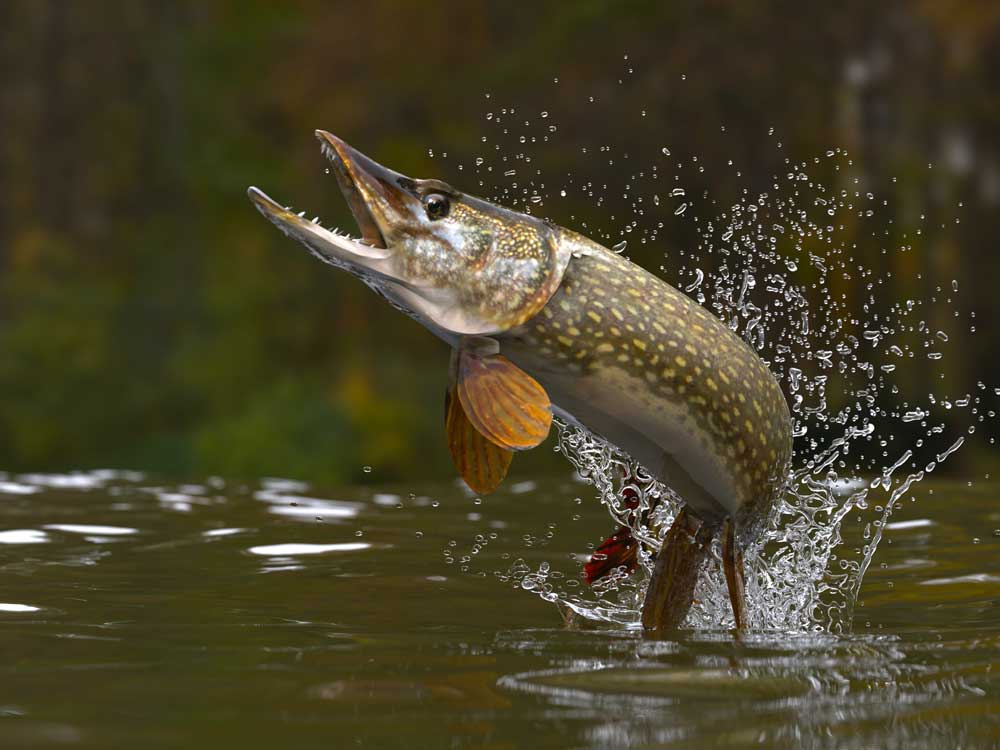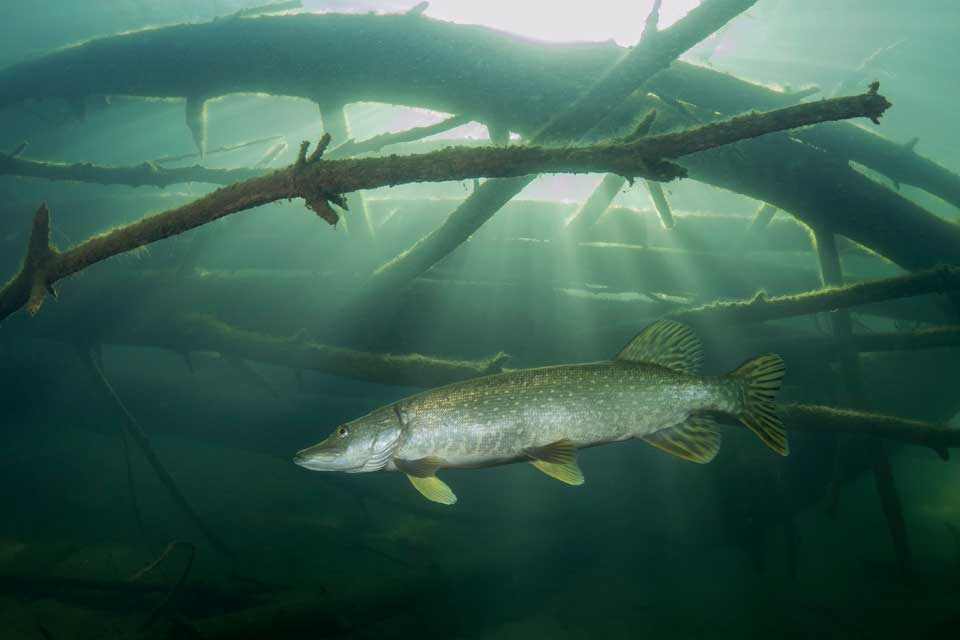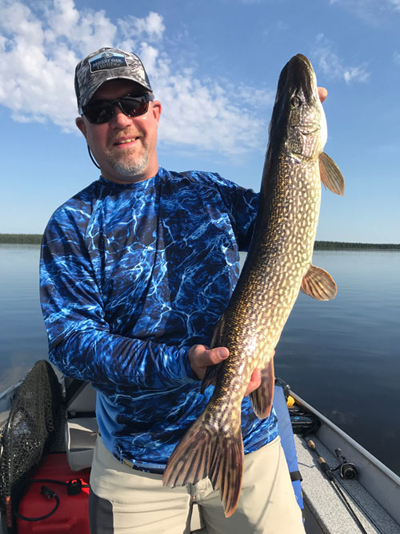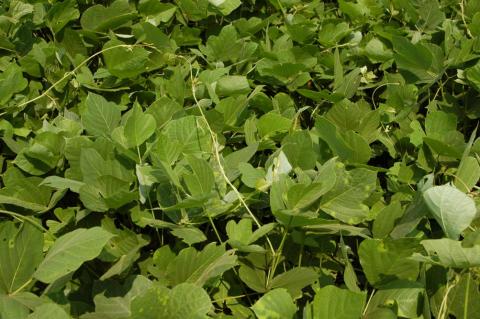The northern pike's other name is the "water wolf," a moniker gained from its fearsome predatory and defensive skills. Northern pike fishing requires know-how of their habitat, the type of gear to use, and what they're doing at a particular time of year.
However, the most important thing to know about going after the water wolf is never to lip the fish—do not put your hand in its mouth to get your hook back. Not only do the pikes share their tenacity and predatory nature with wolves, but they also have incredibly sharp teeth.

Northern Pike Stats
These fish have been around for millennia, and the modern-day pike has changed very little from its prehistoric ancestor. With an elongated flat head and long body, they are naturally camouflaged as they lie in wait among the underwater reeds. Their olive-green mottled skin blends expertly with aquatic vegetation.
Pikes lie in wait for their prey to swim by and then strike without warning. Their dorsal fins, which on most species sit in the middle of the back, are farther down, right before its forked tail. When it attacks, it bends its body in an "S" shape and then propels itself forward at massive speeds—10 to 15 feet per second. When it nears its prey, it opens its mouth and flares its gills, letting the water and victim suck back into its mouth, where hundreds of sharp, backward-facing teeth await.
Spawning northern pike are easy to spot in the shallows because of the massive stir they kick up while mating. A few males and one female will wrestle around the shallows while the female produces up to 30,000 eggs—a necessary production, as so few of the fry survive.
If the pike fry survive, they will rapidly grow. Once they're a foot long, pikes are no longer feeding off zooplankton but are hunting other, smaller fish. By the time they are three or four years old, most northern pike measure up to 20 inches. They will reach 30 inches by the time they're seven or eight years old, and pike can live up to ten years.
Anglers who fish for northern pike love the ferocity of a pike's fight, as well as their delicious white, flaky flesh.
Where to Fish for Pike

Northern pikes’ long streamlined bodies and aggressive nature suit these fish to any area with a lot of aquatic vegetation. They're experts at hunting and chasing down their prey in and out of underwater weeds. Focus on any shallow, reedy areas like bays, flats, or rice fields.
When you do find a promising reedy habitat, keep your trolling motor running. These fish, because of their aggressive nature, are pretty easy to spot in their preferred shallow hunting grounds, so you shouldn't spend too much time in one spot if you're not getting any hits. Cover a lot of areas and use motor lures that can help you broaden your strike zone.
When to Fish for Pike
These fish spawn in early spring, often when there are still scrims of ice on the water. If you're attentive after the ice begins to melt and drift around, you may hook some of the more massive pikes, as they tend to stick around in the shallow areas for a while after spawning, rebuilding lost body weight and energy. Some dangers come with fishing in cold weather, however, so take precautions.
When the pikes have recovered, they will start to make their way to slightly deeper areas, usually stopping by the first significant structure point they can find to regroup. A viable spot is a drop-off, a point, or weed bed. In the spring, check the back bays and shallow flats for telltale signs of spawning and follow their trail to slightly deeper water.
During the summer months, northern pikes switch up their routine. These fish have a keen hunter's instinct and will actively patrol their chosen weed beds for schools of baitfish to prey upon. Once the water begins to warm up, the more giant pikes will head deeper to stay cool, while the small- to medium-sized pikes will take over the weed bed patrols.
As the weather cools and the leaves turn in autumn, pike will once again broaden their territories, often returning to the same beds they had hunted in spring. Any remaining, healthy vegetation in shallow waters will be your best bet for end-of-season pike.
Pike Fishing Gear
 Pikes are visual hunters, so choose flashy colors for your lures. They respond quickly to noise and vibrations, so buzz baits, walking baits, and lipless cranks will bring a pike to your lure. Northern pikes are renowned for biting off more than they can chew, so, when choosing a lure, don't be wary of choosing one that's too big.
Pikes are visual hunters, so choose flashy colors for your lures. They respond quickly to noise and vibrations, so buzz baits, walking baits, and lipless cranks will bring a pike to your lure. Northern pikes are renowned for biting off more than they can chew, so, when choosing a lure, don't be wary of choosing one that's too big.
Pikes are fighters, and they are strong, so your rod, reel, and line must be up to the task if you want to hook a pike and land it. Medium to heavy power rods, and a strong braided line—30 to 50 lbs.—are necessities so you don't suffer a heartbreaking snap in the middle of your battle with a water wolf.
Also, pay close attention to boating safety. These fish are aggressive, and it's hard to concentrate on anything else when you have one thrashing on the end of your line.
You will need a strong leader to protect your line from the northern pike's razor-sharp teeth, in addition to gaudy lures and a sturdy rod. A steel or heavy fluorocarbon leader will save you money and frustration when you're pike fishing.
Last Word
To land a northern pike successfully requires time, effort, and energy. Focus on using the right gear, following safety precautions, and adapting your technique to the pike's aggressive disposition. An angler who underestimates a pike's tenacity will not deign to do it twice.



























